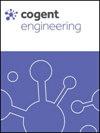Experimental and finite element investigation of resistance spot welding of mild steel sheet covered aluminum alloy, AA 2017
IF 2.5
Q2 ENGINEERING, MULTIDISCIPLINARY
引用次数: 0
Abstract
Resistance spot welding (RSW) is one of the welding technologies that uses the force and heat generated by resistance to the flow of electricity to join metal surfaces. The goal of this research is to investigate the mechanical behavior of RSW,the welding parameters of sheet metal-covered aluminum spot-welded junctions, and finally to verify the micro-hardness of the weld structure. RSW process is a complicated operation that combines electrical, thermal, and mechanical processes. Moreover, serious complications are observed when the weld material is aluminum, because it is a very soft metal and difficult to weld as compared to other metals, Hence, we used mild steel as a cover on both sides and easily did the RSW. Aluminum (Al) thickness, cover sheet metal thickness, and overall welding time achieved relative impacts of 3.890%, 3.250%, and 84.390%, respectively. The percentage impacts of aluminum (Al) thickness, weld cover sheet metal thickness, and welding time in the deformation scenario are 1.171%, 8.731%, and 80.881%, respectively. The percentage impacts of aluminum thickness, cover sheet metal thickness, and welding time duration on temperature are 9.960%, 87.820%, and 1.660%, respectively. The thickness of the cover mild steel sheet is the second-most important factor, next to welding time. Validation results of the two critical weld constraints (welding temperature and welding time) agrees with the experimental results. In addition, the welding temperature response has a percent error of 10.620% due to materials characteristics and the impact of additional welding process constraints.铝合金薄板电阻点焊试验与有限元分析,机械工程学报,2017
电阻点焊(RSW)是一种利用电流阻力产生的力和热来连接金属表面的焊接技术。本研究的目的是研究RSW的力学行为,以及钣金覆盖铝点焊接头的焊接参数,最后验证焊缝组织的显微硬度。RSW工艺是一个复杂的操作,结合了电、热、机械过程。此外,当焊接材料是铝时,观察到严重的并发症,因为它是一种非常软的金属,与其他金属相比,很难焊接,因此,我们使用低碳钢作为两侧的覆盖层,很容易做RSW。铝(Al)厚度、覆盖板厚度和整体焊接时间的相对影响分别为3.890%、3.250%和84.390%。变形场景下铝(Al)厚度、焊缝覆盖板厚度和焊接时间的影响百分比分别为1.171%、8.731%和80.881%。铝材厚度、覆盖板厚度和焊接时间对温度的影响比例分别为9.960%、87.820%和1.660%。覆盖低碳钢薄板的厚度是第二重要的因素,仅次于焊接时间。焊接温度和焊接时间这两个关键焊接约束条件的验证结果与试验结果一致。此外,由于材料特性和附加焊接工艺约束的影响,焊接温度响应的百分比误差为10.620%。
本文章由计算机程序翻译,如有差异,请以英文原文为准。
求助全文
约1分钟内获得全文
求助全文
来源期刊

Cogent Engineering
ENGINEERING, MULTIDISCIPLINARY-
CiteScore
4.00
自引率
5.30%
发文量
213
审稿时长
13 weeks
期刊介绍:
One of the largest, multidisciplinary open access engineering journals of peer-reviewed research, Cogent Engineering, part of the Taylor & Francis Group, covers all areas of engineering and technology, from chemical engineering to computer science, and mechanical to materials engineering. Cogent Engineering encourages interdisciplinary research and also accepts negative results, software article, replication studies and reviews.
 求助内容:
求助内容: 应助结果提醒方式:
应助结果提醒方式:


